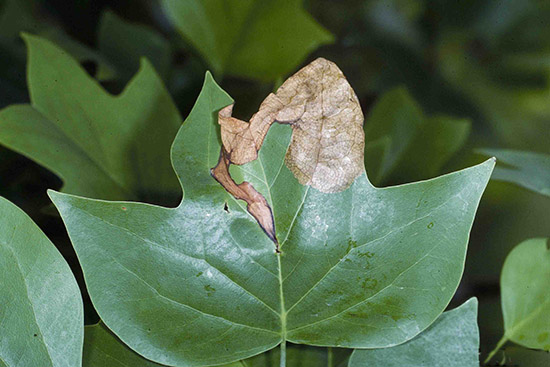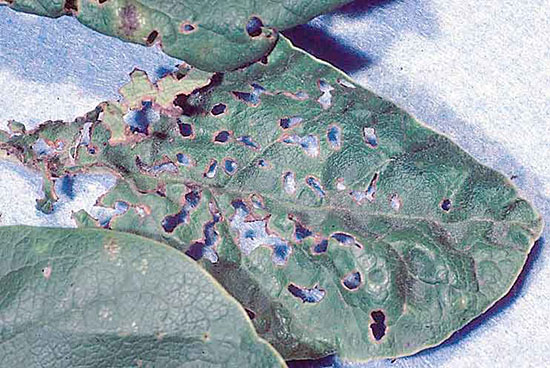Issue 11, July 7, 2015
Yellow Poplar Weevil
Yellow poplar weevil, Odontopus calceatus, also known as the sassafras weevil, magnolia leafminer, and tuliptree leafminer is numerous this year. Keep an eye out for it in southern Illinois.
Commonly referred to as flying ticks, adults are black, hard-shelled, and about one-eighth inch long. They emerge in the spring and fly to yellow poplar, other magnolias, and sassafras to feed on the buds and leaves. Damage appears as oval holes in the leaves that are about one-quarter inch long. Frequently, they eat only through the lower epidermis and mesophyll, leaving the clear upper epidermis of the leaf which dies and turns brown.

Yellow poplar weevil larval mining damage.

Yellow poplar weevil adult feeding damage on magnolia.
Eggs are laid in midribs on leaf undersides. The hatching larvae feed as leafminers, causing leaf tips to turn brown. Fully-grown larvae in the mines are legless, white, and are less than one-twelfth inch long. There are usually several larvae per mined leaf. They pupate to emerge as adult beetles in July. Although these adults cause some additional feeding damage, it is light compared to the spring. They crawl under fallen leaves and debris beneath the tree, emerging the following spring.
Neither the adult nor larval damage seriously harms tree health, but both are aesthetically obvious. Adults can be controlled with sprays of acephate (Orthene). Some larval control is also likely. Do not spray trees in bloom to avoid pollinator harm. (Phil Nixon)
Author:
Phil Nixon